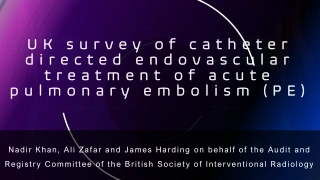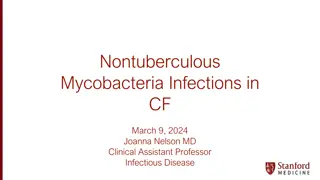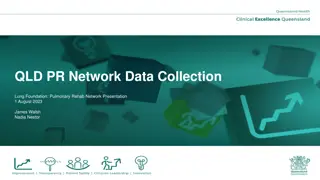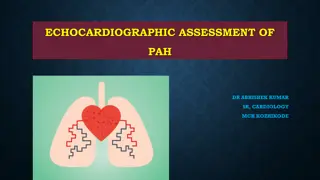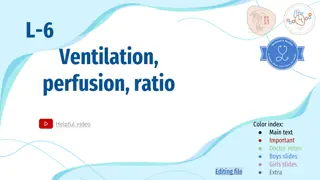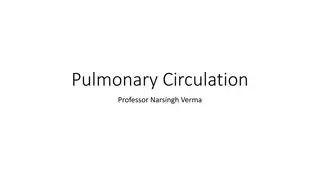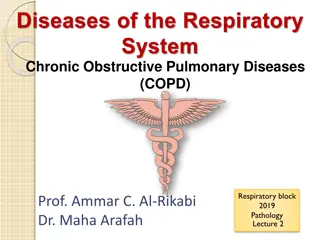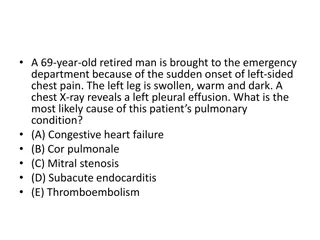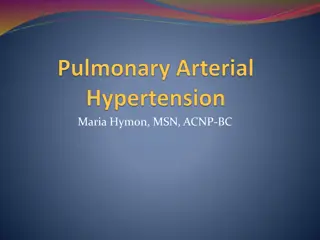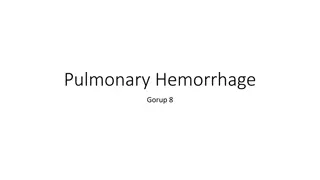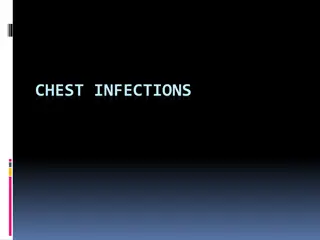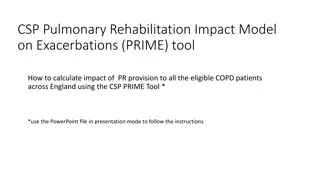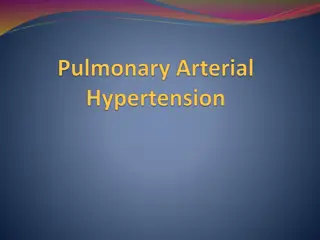
Clinical Aspects of Pulmonary Nontuberculous Mycobacteriosis Review Article
Explore the clinical features, diagnosis, and radiographic findings of pulmonary nontuberculous mycobacteriosis, focusing on nontuberculous mycobacteria (NTM) such as M. avium and M. intracellulare. Learn about characteristic imaging patterns like nodular/bronchiectatic and fibrocavitary presentations.
Uploaded on | 3 Views
Download Presentation

Please find below an Image/Link to download the presentation.
The content on the website is provided AS IS for your information and personal use only. It may not be sold, licensed, or shared on other websites without obtaining consent from the author. If you encounter any issues during the download, it is possible that the publisher has removed the file from their server.
You are allowed to download the files provided on this website for personal or commercial use, subject to the condition that they are used lawfully. All files are the property of their respective owners.
The content on the website is provided AS IS for your information and personal use only. It may not be sold, licensed, or shared on other websites without obtaining consent from the author.
E N D
Presentation Transcript
CLINICAL ASPECTS OF PULMONARY NONTUBERCULOUS MYCOBACTERIOSIS REVIEW ARTICLE HIROSHI MORO, TOSHIYAKI KIKUCHI THE JAPANESE SOCIETY OF INTERNAL MEDICINE 2022
Nontuberculous mycobacteria (NTM) - all mycobacteria except Mycobacterium tuberculosis. Common -M. avium, M. intracellulare, M. kansasii, M. avium intracellulare complex (MAC) [M. avium and M. intracellulare] Etiologies- purely environmental Primarily affect the lungs
CLINICAL FEATURES Cough Sputum Malaise Bloody sputum Dyspnea Weight loss, fatigue, appetite loss (chronic inflammation)
DIAGNOSIS OF NTM LUNG DISEASE American Thoracic Society (ATS) and Infectious Disease Society of America (IDSA), diagnostic criteria Based on characteristic radiographic findings Positive culture results from at least two separate expectorated sputum samples Without the need for a clinical manifestation
RADIOGRAPHIC FINDINGS Vary depending on the causative organism Findings consistent with NTM lung disease on chest X-ray or HRCT Infiltration (usually nodular or reticular nodular) Cavity Multifocal bronchiectasis Multiple nodules Pleural exudate (rare) Reactive pleural thickening
Pulmonary MAC diseases characteristic imaging findings 1. Nodular/ bronchiectatic (NB) Majority of cases Middle aged and older women Without a history of smoking Nodules and bronchiectasis- right middle lobe, left lingular segment HRCT chest useful for diagnosing this pattern Prognosis is relatively good
2. Fibrocavitory Elderly men Preexisting lung diseases (emphysema, obsolete tuberculosis) Progresses rapidly Poor prognosis Cavities- thinner walls than those caused by tuberculosis
3. Isolated nodule type 4. Systemic dissemination type 5. Hypersensitive pneumonia type Host factors, pathogen virulence, conditions of exposure determine the type of disease
M. kansasii- and M. szulgai- clinical symptoms and imaging findings similar to pulmonary tuberculosis (e.g. cavities and nodules in the apex of the lung)
MICROBIOLOGIC EVALUATION Microbiological confirmation is essential- ubiquitous environmental organisms A positive sputum culture- environmental contamination or noninvasive colonization in patients with chronic lung disease Positive culture results- at least two separate expectorated sputum samples required
Good-quality sputum essential Sputum induction with hypertonic saline (esp in patients unable to expectorate sputum) Bronchial lavage If smear results are positive and tuberculosis cannot be ruled out, consider an additional NAAT
SERODIAGNOSIS Serologic test to detect IgA antibodies against MAC-specific glycopeptidyl lipid core antigen using an enzyme immunoassay- available in Japan since 2011 A study previously demonstrated favorable results for both the sensitivity and specificity of this assay Further research is needed to verify
SUSCEPTIBILITY TESTING Usefulness of drug susceptibility tests for pulmonary NTM diseases not fully established Drug susceptibility test method M24 established by the United States Clinical and Laboratory Standards Institute, adopted in the guidelines of both the US and Japan The international guidelines revised in 2020 recommend treatment based on macrolide and amikacin susceptibility rather than empiric therapy for MAC lung disease For M. kansasii lung disease, treatment based on rifampicin susceptibility is recommended over empiric therapy
TREATMENT Assessment of risk and benefits Important to consider the immune status in immunocompromised hosts Treatment of pulmonary NTM infection depends on the infectious organism species Generally, the reports on effective drugs is limited, need for long- term management with multiple drugs
PULMONARY MAC DISEASE Multidrug therapy including clarithromycin is essential Clarithromycin is considered a key drug Monotherapy should be strictly avoided due to concerns regarding drug- resistant strains ATS/IDSA guideline and ATS/ERS/ESCMID/IDSA guideline recommend a three-drug, macrolide based regimen A minimum of one year of therapy after consecutive negative sputum cultures
Nodular bronchiectatic disease Clarithromycin (500 mg BD) Ethambutol (25 mg/kg per day) 3 times per week Rifampin (600 mg) FC disease and severe nodular bronchiectatic disease Clarithromycin (500 mg BD) Ethambutol (15 mg/kg per day) daily dosing Rifampin(10 mg/kg, 450 mg to 600 mg per day)
Streptomycin or amikacin (10-15 mg/kg, 3 times per week) for the first 2 to 3 months should be considered in patients with FC disease These drugs are particularly effective for extracellular bacillus Clarithromycin and rifampin may be replaced by azithromycin and rifabutin Dose modification- elderly, those with renal dysfunction and a low body weight to avoid adverse effects Japanese guideline recommends a similar treatment regimen with lower daily doses of clarithromycin (600 to 800 mg)
Because of long-term nature of combination therapy, side effects and drug interactions Rifampin reduces the blood concentration levels of clarithromycin, lead to a decline in therapeutic efficacy Rifampin also modifies the levels of the corticosteroid administered to the patient Hence, a therapeutic regimen without rifampin is currently being explored A previous study suggested that a two-drug regimen with clarithromycin and ethambutol can achieve clinical efficacy equivalent to or better than a three- drug regimen with rifampin
M. KANSASII INFECTION Rifampin (600 mg/day) Isoniazid (300 mg/day) Ethambutol (600 mg/day) Duration -12 months after negative sputum cultures Better therapeutic effects are expected than with pulmonary MAC diseases M. kansasii infection may deteriorate in the absence of an appropriate treatment Recurrence is typically seen, concern of rifampin-resistant strains The international guidelines revised in 2020 - either isoniazid or macrolides to be used in combination with rifampicin and ethambutol
SURGICAL MANAGEMENT Lung resection : ATS/IDSA guideline -in patients with limited (focal) disease, sufficient cardiopulmonary reserve to tolerate partial or complete lung resection. Successful with multidrug treatment regimens Cases refractory to drug therapy With macrolide-resistant strains With serious complications (hemoptysis) Severe perioperative complications Several single-institution retrospective studies including a few patients -good treatment outcome for surgical intervention
PROGNOSIS A meta-analysis of HIV-negative patients with pulmonary MAC disease- treatment success rate of 38% 60% of patients with pulmonary MAC disease- demonstrated consecutively negative sputum cultures with a standard regimen Still definitive treatment for pulmonary MAC disease not yet identified Poor prognostic factors FC form, positive sputum smear, and M. intracellulare as the causative organism
SPECIAL CONSIDERATION IN RA PATIENTS Recent studies- patients with rheumatoid arthritis (RA), and anti-TNF- alpha therapy are at increased risk for NTM diseases Epidemiological study performed in Asia - the incidence of NTM diseases was 4.22 times greater in RA group than in the non-RA group Study in North America - the adjusted hazard ratio for NTM disease was 2.08 in the RA group, relative to the non- RA group
Review of the US FDA Med Watch database for patients receiving anti- TNF-alpha therapy- 44% of these patients had been diagnosed with NTM diseases Median patient age- 62 years Most patients (65%) were women Most (70%) had RA M. avium (50%) was the most commonly implicated bacteria Pulmonary region was the most frequently reported site of disease (56%)
Frequent occurrence of pulmonary NTM disease in RA patients associated with preexisting structural abnormalities (extraarticular involvement by RA) Pretreatment screening and appropriate management of NTM diseases are required in RA patients undergoing anti-TNF-alpha therapy Important to perform HRCT before administering biological agents in order to evaluate the presence of airway disease If the NTM diseases is suspected, multiple sputum examinations or sampling by bronchoscopy- considered A serological assay is a promising technique
Imaging findings of airway diseases commonly complicating RA are similar to the NTM disease on HRCT (difficult to differentiate) Colonization of NTM in the airway is not very rare in RA patients NTM diseases should be strictly diagnosed according to the diagnostic criteria The use of biologics in patients with confirmed pulmonary NTM disease is contraindicated In cases with NB forms of MAC lung disease, the use of biologics may be considered aseessing the risks and benefits

